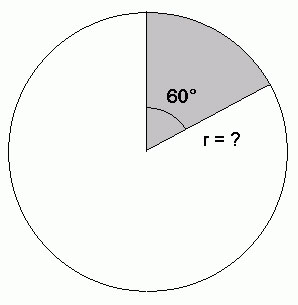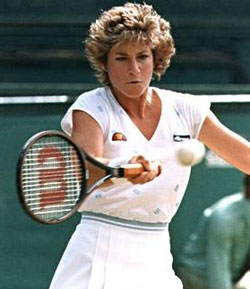|
TennisOne Lessons Stable Alignment III: Contact in Front Daryl Fisher During a tennis match, have you ever lost power or the ability to handle power? Have you ever been injured because of awkward contact between the racquet and the ball? Perhaps you did not meet the ball “in front,” which could have created a loss of stable alignment and thereby created a weak link. Achieving stable alignment involves the relative positioning of parts of your body as you hit the ball so as to create the greatest stability and resilience, which in turn protects the body's weaknesses (See Stable Alignment and Stable Alignment II). What follows will be an introduction to the value of hitting in front in a way that relates to stable alignment. Tennis pros regularly talk about the value of meeting the ball “in front,” but many amateur players struggle with this concept for multiple reasons. One reason is that it is unclear where in front is. Another reason is that the benefits are unknown or seem minimal. The benefits, however, are far from minimal, and the lack of them can significantly limit a player’s ability to improve. Where Is "In Front?" If you are standing at the center of the baseline of a tennis court, the net and your opponent’s side of the court are considered to be “in front” of you. With this orientation, the baseline runs in each direction to the “side” of you. “Behind” you there is usually some sort of fence or backstop. So far I have placed the labels of “in front,” “next to,” and “behind” in quotes because it is possible for your body to be turned in a number of ways and still use this orientation. While playing, your face is regularly directed toward your opponent’s side of the court even if your body is turned sideways to the net, so you could say that the orientation is based on what is in front of, to the side of, or behind your face without regard for the orientation of the rest of your body. That is, whether your entire body is open to the net or turned so that your body is open to the side, “in front” is in the direction of your opponent’s side of the court and the net. With that understanding of where in front is, for what follows I will no longer use quotation marks. What Is Hitting In Front? With the direction of in front established, the next thing to consider is what it means to hit a ball in front. As a loose definition, to meet the ball in front is to meet the ball with your racquet closer to your target (the spot on your opponent’s side of the net) than your torso. In case you have heard someone refer to getting behind the ball, it is the same thing. Many people struggle with the concept of hitting in front, so I hope to help to clarify this concept when I say that there is not just one contact point that is in front. In fact there is a range of contact points that are all in front. If you extend your arm directly in front of you toward your target across the net, this is clearly in front and cannot be any more in front. To move your arm more toward the side can be still in front, though less in front. Classic tennis instruction manuals of more than 3 decades ago advocated meeting the ball in front, but generally just in front of the front foot as you stepped into the ball (open stances were not yet accepted). This was officially in front, but a bit more to the side than how in front modern professionals prefer to hit the ball.
It goes beyond the scope of this article to detail the reasons for why classic tennis emphasized a different version of in front, but there were certainly reasons ranging from the stances, the grips, and the different emphasis on generating and handling power. Modern stances lend themselves to reaching farther forward, modern grips are more conducive to a wrist position that is more comfortable with a contact point more in front, and of course modern tennis requires a greater emphasis on handling and generating power. Arm AlignmentI hope to clarify hitting in front further to say that contact in front has something to do with grips and stance and so on, but it is mostly about the arm alignment relative to the body and the eventual target across the net.
Many players, when given the instruction to meet the ball more in front, will try to get the racquet more in front with a bend at the waist and somewhat of an extra lunge at the ball. It is as if the person is trying to stretch their contact zone rather than simply moving their arm forward and thereby moving their contact point forward. This reaching and lunging for the ball throws off a player’s balance more often than it helps anything else about the stroke, and should be avoided. The version of meeting the ball in front that I am advocating is a simple move to direct the arms at contact more toward the target across the net rather than more laterally at contact. Balance should not be compromised. Downside The primary downside to meeting the ball more in front is that the more your arm is extended forward the less reach you have laterally. That is, if your arm is extended more toward the net, your reach along the baseline is reduced. With that in mind, to meet the ball in front must provide significant value in order to override the importance of lateral reach. Stable Arm Alignment With regard to stable alignment, first consider the forehand side. If you were to imagine pushing with one arm something very heavy, like a piano on wheels, you would meet the piano with your arm fully extended in front of you. To push the piano with your arm extended laterally would make putting your full weight into the push difficult, and in fact you would risk injury around your shoulder area.
Hitting a one-handed forehand in front offers the same benefits of stable alignment. With the same arm alignment that you would use to push a heavy object, you can meet a hard-hit tennis ball and handle its power. And like pushing a heavy object, you can put your entire weight into the shot. Most importantly, with this alignment you should be able to do both of these things with little risk of injury. Look at the forehand of nearly any pro currently playing on the tour. Notice that as the person strikes the ball, the contact is generally with a physical alignment of the arm that could easily be used to push a heavy object (such as a piano on wheels.) This is a crucial point: when looking at photographs of professionals as they meet tennis balls, can you imagine them with no racquet in their hands but using the same arm alignment to push against something heavy with no risk of injury? Could you imagine the same for your contact points? Years ago I knew a player with a mildly strained arm, and if he met the ball next to him on his forehand side, his arm would feel a jolt of pain. The injury healed fairly quickly fortunately, but while he had the injury it acted as a training aid in an interesting way: if he met the ball sufficiently in front, then his arm would not hurt. Backhand Stable Alignment
With regard to stable alignment, the backhand side is somewhat different. There are a variety of backhands, in fact, and they are different from one another as well. The one-handed topspin backhand clearly benefits from meeting the ball in front from the perspective of stable alignment. This is an extensive topic that I discuss more thoroughly in Stable Alignment II: the One-Handed Topspin Backhand.
More specific to this article and the combined topic of stable alignment and contact in front, interestingly enough, a properly hit one-handed backhand ground stroke or volley is nearly always hit in front simply because the hitting arm is attached on the “front” side of the torso. The hitting arm would have to reach back awkwardly in order to hit the ball next to or behind the torso. To reach back in this way is possible, but it is at best a last resort option. The only other consideration regarding the one-handed backhand is that the Eastern backhand grip makes meeting the ball farther in front easier than the Continental grip The two-handed backhand, like the forehand, can be met more laterally. There is, generally speaking, no challenge to stability to meet the ball more next to the body when there are two hands on the racquet. For example, with certainty, nearly every tennis player in the world needs more stability on their shots than Nadal with two hands on his racquet does, so if stability is not the reason that he meets the ball in front, there must be some other very good reason. I understand that not everyone likes to hold Nadal’s strokes up as models of efficiency, but he does many things fundamentally correctly, and how far he meets the ball in front is one of them. Nadal and the other great two-handed backhanded players all meet the ball in front for the reason of being able to track the ball more easily. Tracking the ball refers to what most people would call “watching the ball.” That is, meeting the ball in front helps us to “watch the ball.” Tracking the ball is a complex topic that I will address more fully in my next article on meeting the ball in front. Experiments
Before you disregard the value of in front, consider that Chris Evert has said that one of the best coaching tips that she has received was to get behind the ball (as a reminder, this is the same as meeting the ball in front). She liked to imagine her torso as the vertex of a V, with her arms reaching forward as the extensions from the vertex. Perhaps you would like to try this image as well. I would also like to encourage you to experiment with where you meet the ball, and see where you feel more stability when handling and generating harder hit balls. You might even reduce your likelihood of injury. The next time you go out to hit tennis balls, ask yourself the following questions: Do you meet the ball in front? Do your grips or stances influence where in front is comfortable for you? Do you meet the ball more in front on the forehand or backhand side? To answer these questions and to contact in front might not be the best tip that you have ever received, but then again, perhaps it might. |
|||||||||||


